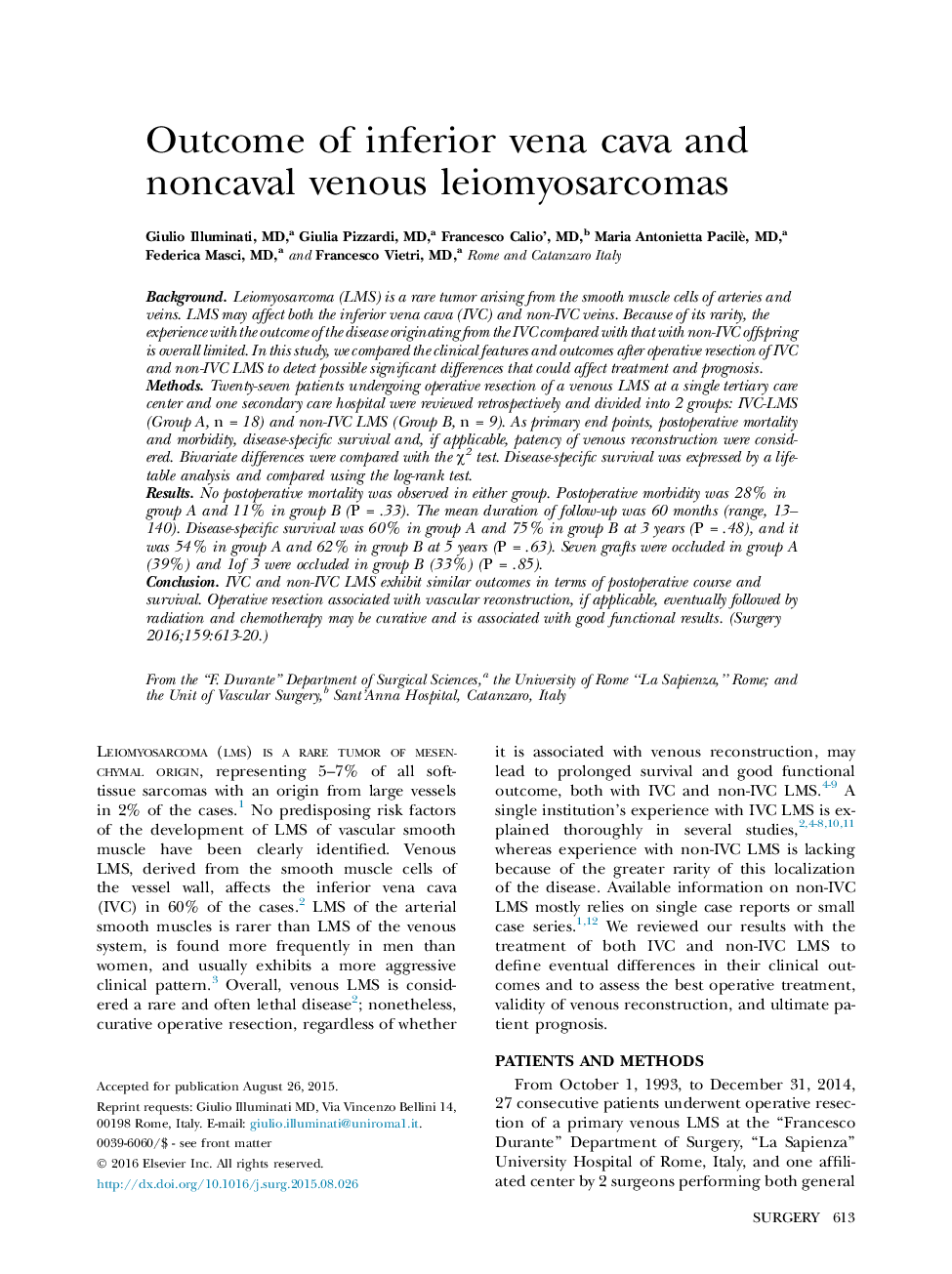| Article ID | Journal | Published Year | Pages | File Type |
|---|---|---|---|---|
| 4306472 | Surgery | 2016 | 8 Pages |
BackgroundLeiomyosarcoma (LMS) is a rare tumor arising from the smooth muscle cells of arteries and veins. LMS may affect both the inferior vena cava (IVC) and non-IVC veins. Because of its rarity, the experience with the outcome of the disease originating from the IVC compared with that with non-IVC offspring is overall limited. In this study, we compared the clinical features and outcomes after operative resection of IVC and non-IVC LMS to detect possible significant differences that could affect treatment and prognosis.MethodsTwenty-seven patients undergoing operative resection of a venous LMS at a single tertiary care center and one secondary care hospital were reviewed retrospectively and divided into 2 groups: IVC-LMS (Group A, n = 18) and non-IVC LMS (Group B, n = 9). As primary end points, postoperative mortality and morbidity, disease-specific survival and, if applicable, patency of venous reconstruction were considered. Bivariate differences were compared with the χ2 test. Disease-specific survival was expressed by a life-table analysis and compared using the log-rank test.ResultsNo postoperative mortality was observed in either group. Postoperative morbidity was 28% in group A and 11% in group B (P = .33). The mean duration of follow-up was 60 months (range, 13–140). Disease-specific survival was 60% in group A and 75% in group B at 3 years (P = .48), and it was 54% in group A and 62% in group B at 5 years (P = .63). Seven grafts were occluded in group A (39%) and 1of 3 were occluded in group B (33%) (P = .85).ConclusionIVC and non-IVC LMS exhibit similar outcomes in terms of postoperative course and survival. Operative resection associated with vascular reconstruction, if applicable, eventually followed by radiation and chemotherapy may be curative and is associated with good functional results.
